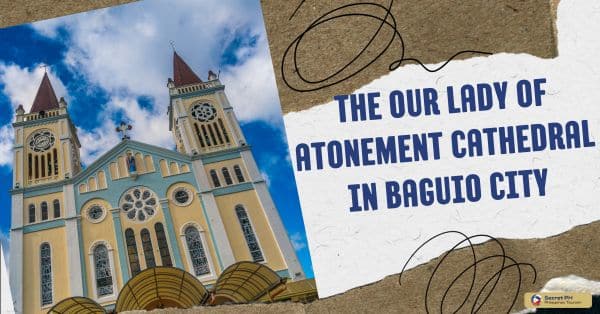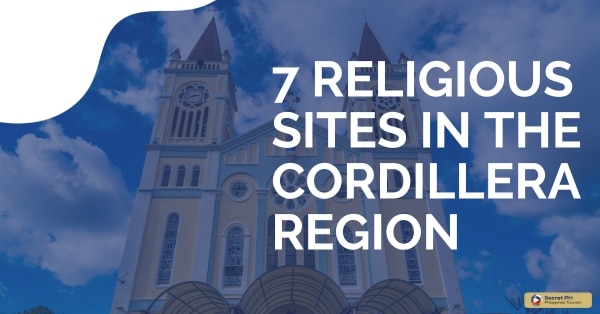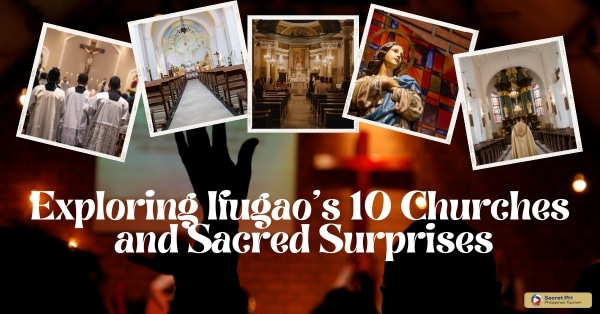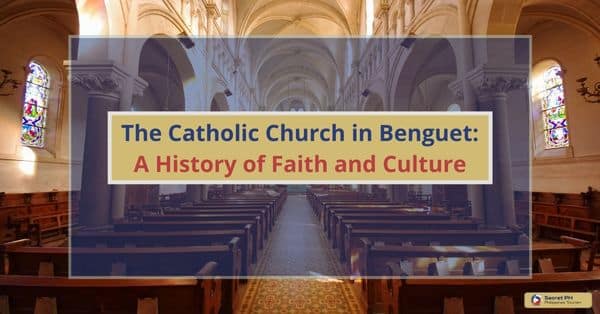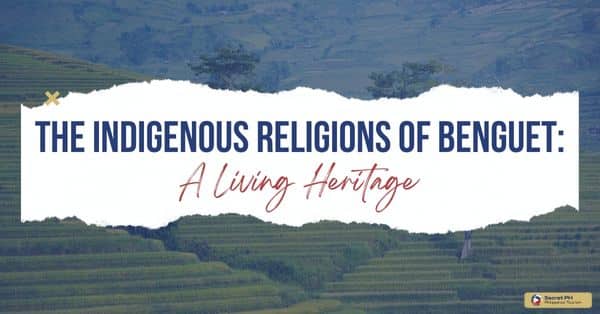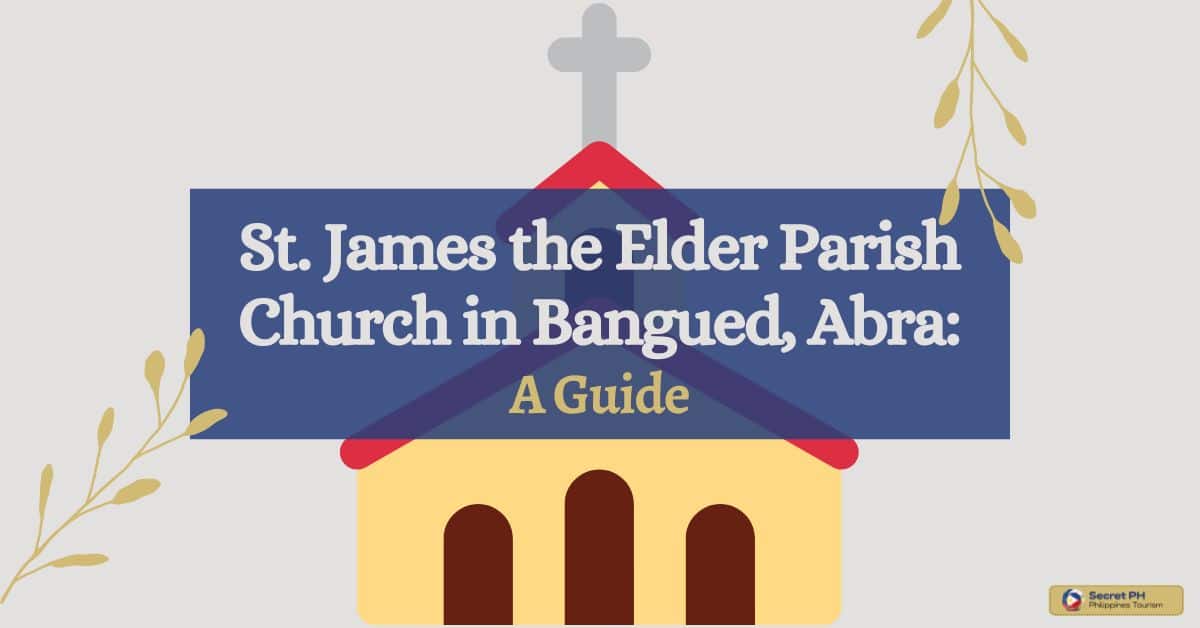The Magellan’s Cross in Cebu City is a historical landmark that holds great significance to both the local population and the Philippines as a whole. The cross was planted by the Spanish explorer, Ferdinand Magellan, in 1521, marking the arrival of Western civilization in the Philippines. The cross has since become an important symbol of Cebu’s rich history and a popular tourist attraction.
In this blog post, we will delve into the history, location, significance, and legends surrounding the Magellan’s Cross, and explore the impact it has had on Cebu City and its people throughout the centuries.

The Legend Behind Magellan’s Cross
The Legend Behind Magellan’s Cross is a fascinating tale that has been passed down through generations in Cebu City. According to the legend, when Ferdinand Magellan arrived in Cebu, he planted a cross on the spot where he and his men first set foot on the island. The cross was said to have been made of wood and was brought by Magellan himself from Spain.
However, the legend goes that the original cross planted by Magellan was later replaced by a wooden cross encased in tindalo wood. The reason for this replacement was that the original cross was said to have been eaten by termites and was no longer visible. This wood encasement was said to have been blessed by a Catholic priest, and it was believed to possess magical powers that protected the cross from decay.
The legend also states that the cross was discovered by a local tribe, the Rajah Humabon, and his wife, Hara Humamay. They were said to have been converted to Christianity by Magellan and his men. The couple were said to have been so moved by the power of the cross that they ordered their people to worship it.
The legend of the Magellan’s Cross is an important part of Cebuano culture and tradition, and it is believed to hold great spiritual significance. The cross is often visited by locals and tourists alike, who come to pay their respects to the symbol of Christianity and the arrival of Western civilization in the Philippines.

Description of the Site
It is a small square with a chapel built around the cross, which is encased in tindalo wood. The location is considered as a historical landmark and a popular tourist attraction. It is visited by many locals and tourists alike. The chapel is open for visitors and locals perform rituals and ceremonies there. The cross is considered as a symbol of Christianity and the arrival of Western civilization in the Philippines.
Location and Accessibility
The cross is located at the spot Magellan reportedly erected it for Christianity in 1521, and has been a magnet for local and foreign tourists alike since the early 19th century. Accessibility to Magellan’s Cross is convenient due to its central location in the heart of downtown Cebu City. It is easily reached by both car and public transportation from any part of Cebu. Despite Magellan’s Cross’ popularity, it remains a quiet and peaceful place, where visitors can take time to appreciate its unique mix of religious history, culture and art.

Physical Description of the Cross
This cross stands four feet tall and has a simple, upright design that features an octagonal shape at its center. The floor below the cross is composed of red tiling and each side displays a different style of painting ranging from floral designs to depictions of religious figures. Its surface is made up of white tarpaulin with a bronze-colored finish in the middle. These features give Magellan’s Cross an eye-catching appearance that draws countless visitors from around the world daily.

Significance of the Cross in Modern Times
Magellan’s Cross, which was planted in Cebu City by Magellan during his voyage around the world, is touted as a symbol of Christianity and conquest still to this day. Its legacy has been passed down over generations and it serves as a reminder of how important faith is in our daily lives. In modern times, the Cross still holds profound significance – not only for Christians but all people – as it stands to represent peace, redemption, faith and hope even amidst difficult circumstances.
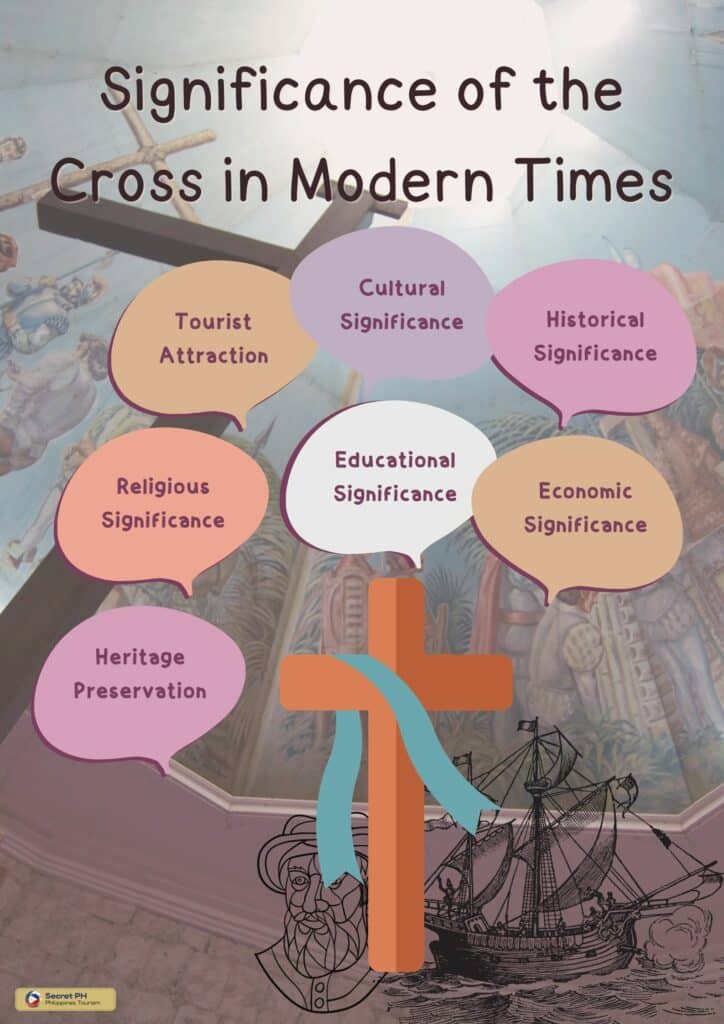
- Tourist Attraction: The Magellan’s Cross is a popular tourist attraction in Cebu City and is visited by many people from all over the world.
- Cultural Significance: The cross holds great cultural significance to the local population, as it symbolizes the arrival of Western civilization in the Philippines.
- Historical Significance: The cross is an important historical landmark, marking the spot where Ferdinand Magellan and his men first set foot on the island of Cebu.
- Religious Significance: The cross is a symbol of Christianity and is often visited by religious pilgrimages and local Catholics.
- Educational Significance: The cross is a valuable educational resource, providing visitors with insight into the history of Cebu City and the Philippines.
- Economic Significance: The cross is an important source of revenue for the local economy, as it generates income from tourism.
- Heritage Preservation: The cross is a significant part of Cebu’s heritage and it is important to preserve it for future generations to appreciate.
The Role of the Cross in Cebuano Culture and Tradition
Magellan first planted the cross in 1521 to commemorate the conversion of Queen Juana and Rajah Humabon to Christianity. Since then, it has come to represent Cebu City’s strong Catholic roots, while also serving as a reminder of Magellan’s role in introducing Christianity to the people of Cebu.
Today, Magellan’s Cross is not only a popular tourist destination, but also a holy pilgrimage site for devote Catholics who visit it to pray and give thanks. Every year during Holy Week, numerous pilgrims make their way to Magellan’s Cross to say prayers and burn candles in front of the landmark.
Visiting the Site
This famous landmark stands as an important symbol of Catholicism on the island, having been constructed by the Portuguese explorer Ferdinand Magellan around fifteen hundred years ago during his settlement journey to the region. The cross stands today as an important reminder of Magellan’s arrival and exploration.
Travelers should be sure to visit Magellan’s Cross and admire its historical significance during their stay in Cebu City. Not only do visitors get to appreciate this historic icon, but they also get to take great pictures of it for souvenirs – making Magellan’s Cross one of the most highly visited sites in the area.

Hours of Operation
The hours of operation of the Magellan’s Cross in Cebu City are typically from 6:00 am to 6:00 pm daily. The site is open to the public and visitors are welcome to view the cross and the chapel during these hours.
It’s important to note that the hours of operation may vary depending on special events or ceremonies, such as the Sinulog Festival, which is a religious and cultural celebration in honor of the cross. During these events, the site may have extended hours or may be closed to the public for the duration of the ceremony.
Address: 7WV2+CQG, P. Burgos St, Cebu City, Cebu
Opening Hours: Monday – Sunday 8AM – 6PM
Phone: (078) 945 6321
For pictures and more information, click here.
Admission Fees
There is no admission fees when visiting Magellan’s Cross. However there’s a donation collected that will go towards maintaining Magellan’s Cross, preserving its historical beauty and allowing others to experience its history fully.
In Conclusion
Magellan’s Cross in Cebu City plays an important role in Philippine history. It was planted by Portuguese explorer Ferdinand Magellan when he first arrived on the island of Cebu in 1521. Magellan baptized Rajah Humabon and his whole court as the first Christian Filipinos, making Magellan’s Cross a symbol of this pivotal moment in Filipino culture and history.
Magellan’s Cross also symbolizes Magellan’s enduring role as the brave explorer who sailed around the world. Over the centuries Magellan’s Cross has become a destination of pilgrimage among both historians and local people who come to honor Magellan’s brave accomplishments and the historical importance of this site.

